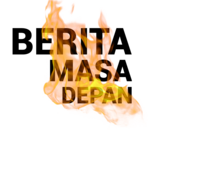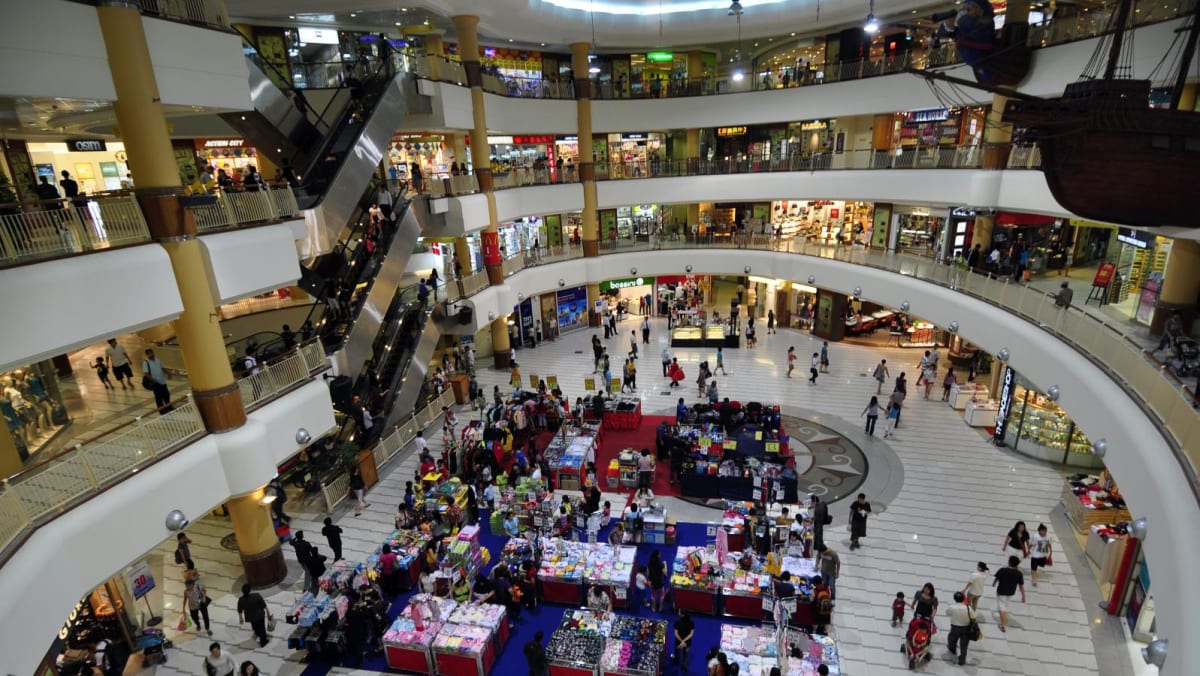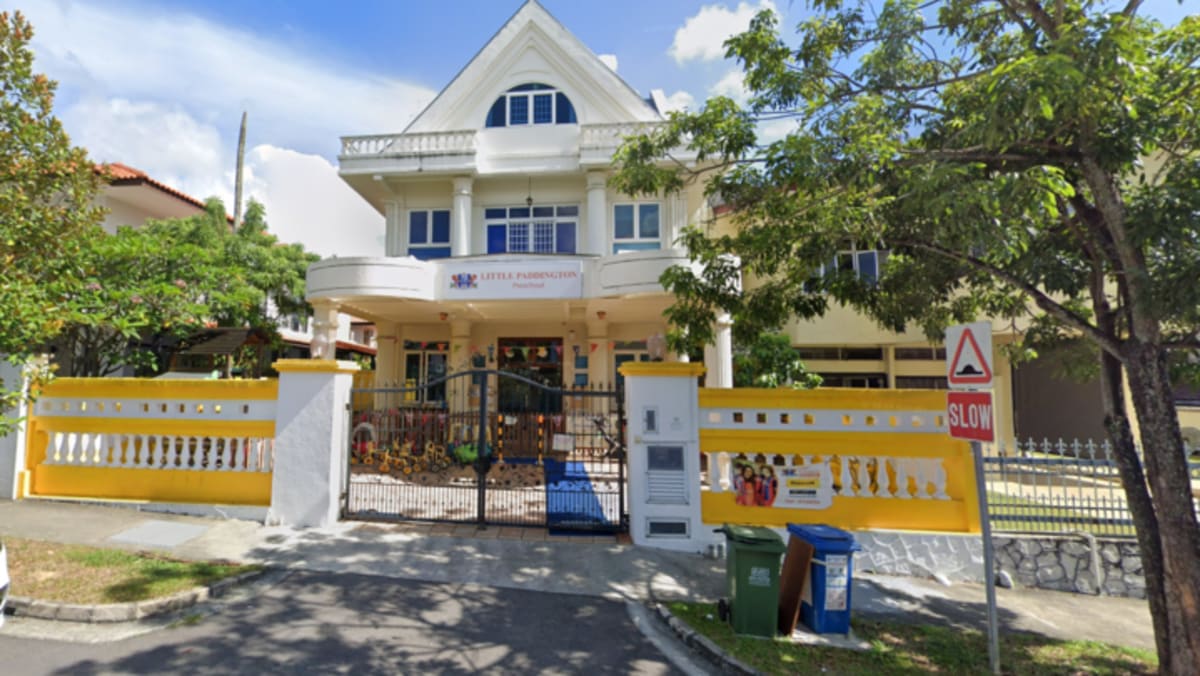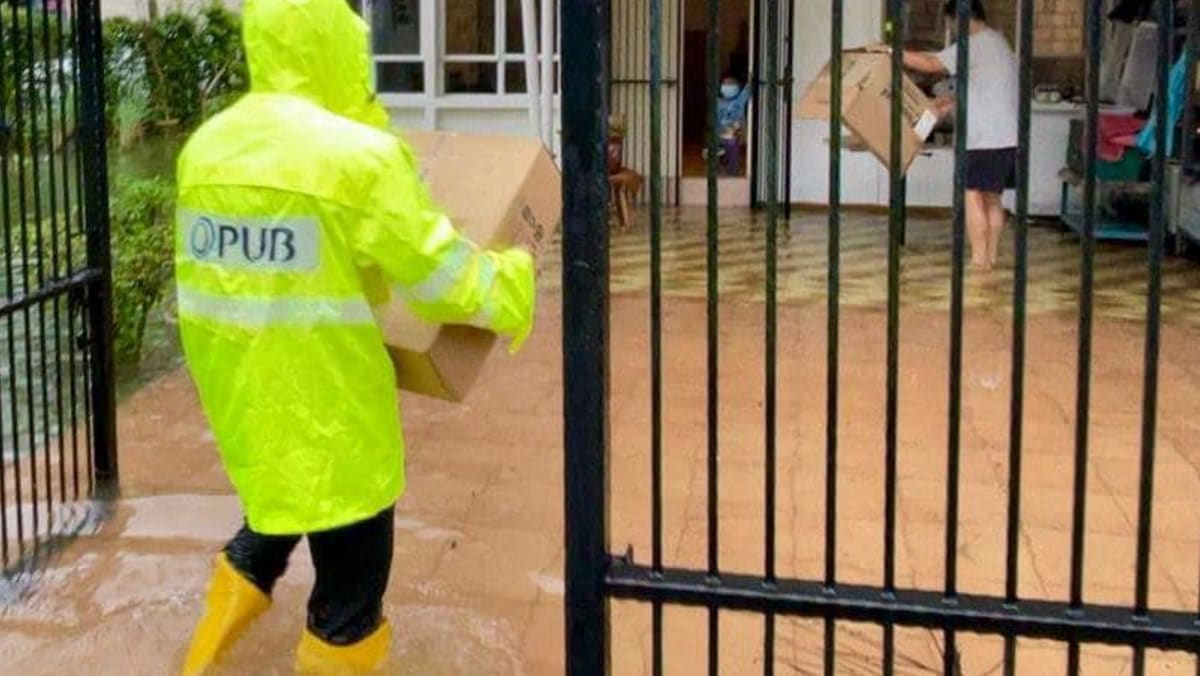SINGAPORE: Unwelcome guests have been helping themselves to meals meant for the feathered inhabitants of Bird Paradise at Mandai.
Rats have made the various aviaries at Singapore's only bird park their home and have been running amok in the bird enclosures.
The pests were observed feeding on food left out for birds and lurking in the undergrowth just feet away from wildlife.
Rats were sighted at the park as early as November last year, and their presence was noticeable when CNA visited earlier this week. The park, previously located in Jurong, moved to a 17ha-site at the Mandai Wildlife Reserve in 2023 and opened its doors to the public on May 8 that year.
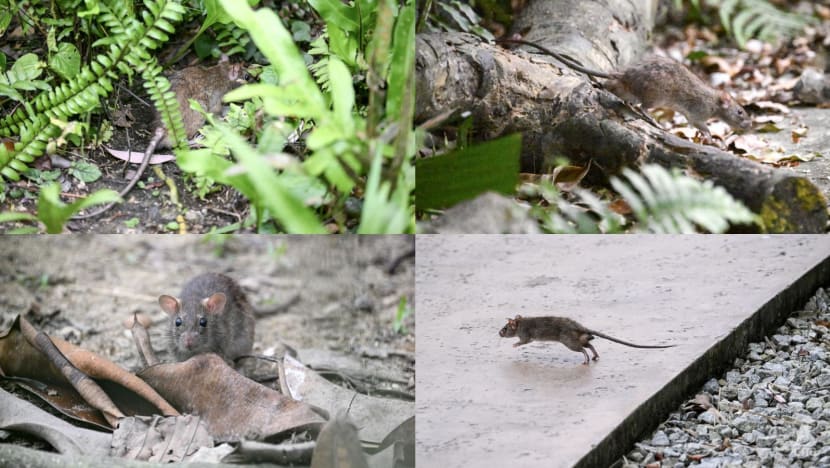 A montage showing rats seen around Singapore's Bird Paradise on Feb 10, 2025. (Photo: CNA/Wallace Woon)
A montage showing rats seen around Singapore's Bird Paradise on Feb 10, 2025. (Photo: CNA/Wallace Woon)
Ms Lian Szu-Jin, who visited the park on Nov 18, 2024, with her boyfriend, said they noticed rats scurrying around in areas off the footpath and raised platforms.
"At first I thought it might be some other rodent that was meant to be part of the enclosure, but then we noticed rat traps placed around and realised that these rodents were probably pests," the 29-year-old public servant said.
She added that there were "quite a lot" of rats and the pair could even hear them squeaking at some enclosures.
This reporter also saw rats, mostly off designated pedestrian walkways. The rodents were spotted in five of the eight walk-through aviaries that CNA visited on Monday (Feb 10).
Nearly all of the aviaries had traps in the form of black boxes with mouse holes and traditional wire cages. These were more frequently seen in areas with a heavier presence of rats.
Some boxes had the words "rodenticide", "poison", "rodent bait station" or "glue trap" stencilled across. All the wire cages were empty.
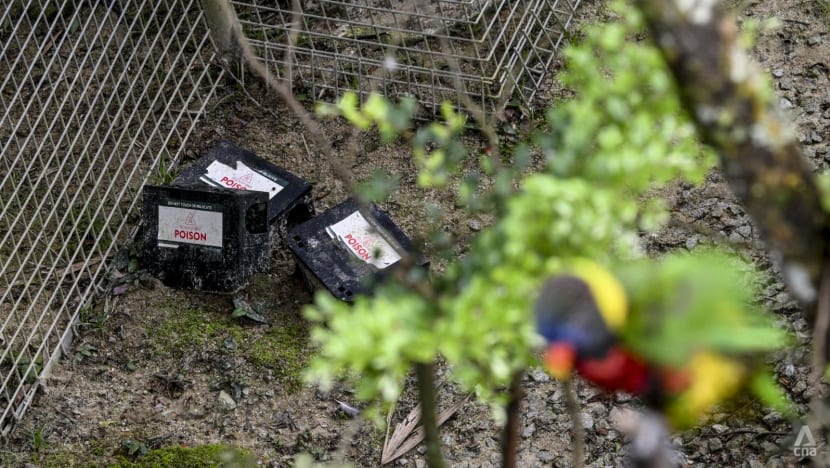 Three rat traps marked with a "poison" warning in an exhibit at Singapore's Bird Paradise on Feb 10, 2025. (Photo: CNA/Wallace Woon)
Three rat traps marked with a "poison" warning in an exhibit at Singapore's Bird Paradise on Feb 10, 2025. (Photo: CNA/Wallace Woon)
In urban Singapore, rats have been known to plague human dwellings with their population curbed via surveillance and culling. The pests have been blamed for spreading disease.
Pest Buster Leslie Chong, the sales director of System Pest Control Services, said that the black boxes used against rats were usually traps with bait that contained poison or had glue boards to snare the vermin.
CNA has contacted Mandai Wildlife Group, which operates Bird Paradise. Queries sent to the National Environment Agency were redirected to Mandai and the National Parks Board (NParks).
RATS SCURRYING AROUND
At the Australian Outback exhibit in Bird Paradise, more than a handful of brown-coloured rats were lurking around a black rat trap under the elevated pedestrian platform, with two wandering in and out of the mouse hole.
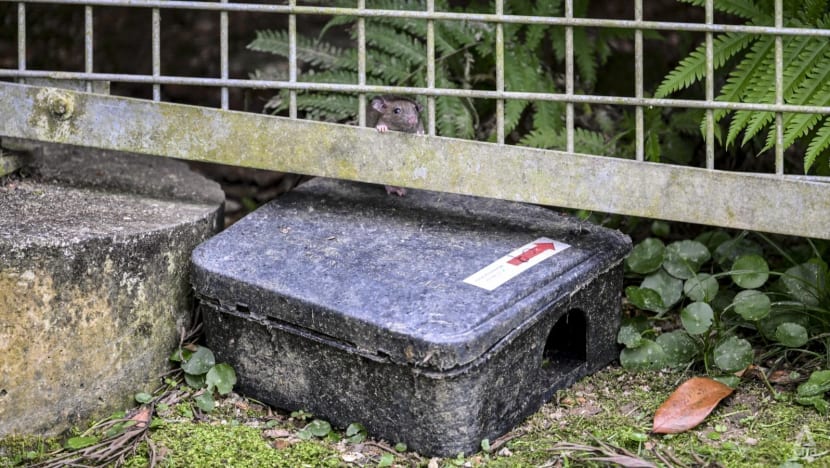 A rat peers through a fence while standing on a rat trap containing rodenticide at Singapore's Bird Paradise on Feb 10, 2025. (Photo: CNA/Wallace Woon)
A rat peers through a fence while standing on a rat trap containing rodenticide at Singapore's Bird Paradise on Feb 10, 2025. (Photo: CNA/Wallace Woon)
One of these subsequently climbed up a bird feeding station where it fed on leftover feed.
This exhibit was also where Ms Lian filmed a kookaburra with a rat in its beak, which it swung against the railing before swallowing whole.
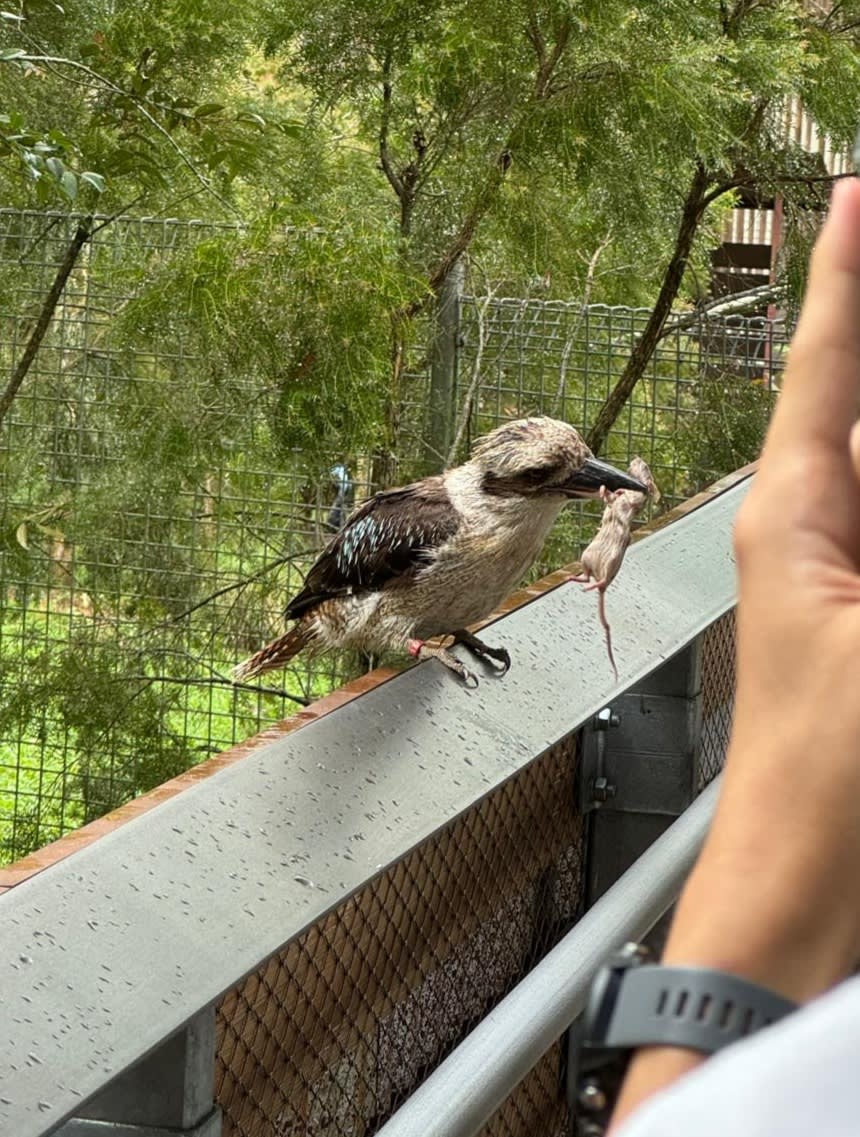 A kookaburra in one of Bird Paradise's aviaries with a rat in its beak. (Photo: Lian Szu-Jin)
A kookaburra in one of Bird Paradise's aviaries with a rat in its beak. (Photo: Lian Szu-Jin)
At other exhibits, an adult rat and a few baby rats were seen roaming, partially concealed, on a manmade tree root structure.
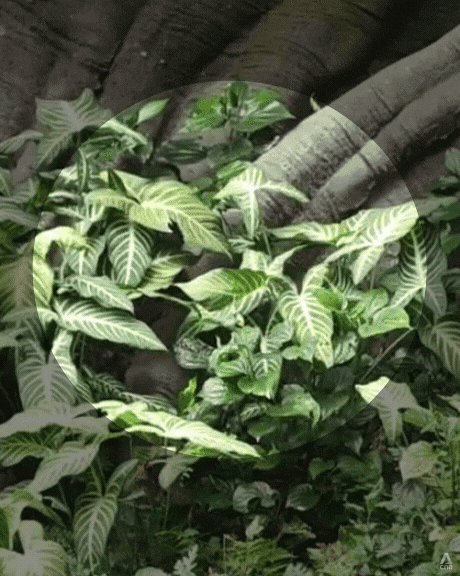 A pack of rats seen at the Amazonian Jewels enclosure at Singapore's Bird Paradise on Feb 10, 2025. (Video: CNA/Koh Wan Ting)
A pack of rats seen at the Amazonian Jewels enclosure at Singapore's Bird Paradise on Feb 10, 2025. (Video: CNA/Koh Wan Ting)
Markedly fewer traps were seen at the exhibit Wings of Asia, where visitors stroll along an elevated walkway. No rats were seen here, possibly due to the presence of hornbills, which are known to consume small mammals.
The exhibit with the most number of rats was Crimson Wetlands, where the park's flamingoes reside.
Packs of the rodents scurried near ponds and jumped branches just metres away from birds. A pair of rats chased each other on a gated footpath, while others openly crossed pedestrian paths.
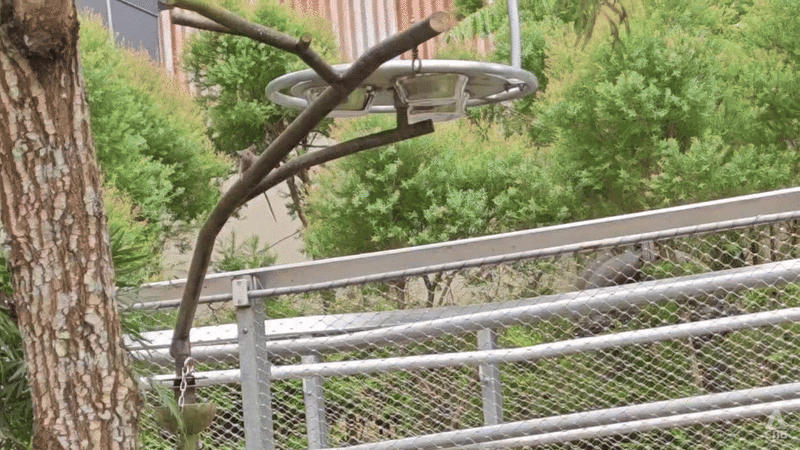 A rat climbing to a feeding station at the Australian Outback enclosure in Singapore's Bird Paradise on Feb 10, 2025. (Video: CNA/Koh Wan Ting)
A rat climbing to a feeding station at the Australian Outback enclosure in Singapore's Bird Paradise on Feb 10, 2025. (Video: CNA/Koh Wan Ting)
Tourists noticed the rodents but otherwise appeared unconcerned.
Mr Bryan Huang, who visited the Bird Paradise in January, said he first caught sight of a rat while observing birds walking on the ground.
"After that I started to notice more of them as I visited more enclosures, one even had a rat trap on the ground," said the 40-year-old, who works in an international media company.
Like Ms Lian, Mr Huang thought that the rodents belonged there.
"At first, I was wondering if they had been released intentionally as prey, but then it didn't make sense that the enclosures would have birds of prey as that might have put the other birds in danger," said Mr Huang, who added that he never noticed rats previously in Jurong Bird Park.
.gif?itok=Yru0TuWx) Two rats chasing each other at a pavement in the Crimson Wetlands exhibition at Singapore's Bird Paradise on Feb 10, 2025. (Video: CNA/Koh Wan Ting)
Two rats chasing each other at a pavement in the Crimson Wetlands exhibition at Singapore's Bird Paradise on Feb 10, 2025. (Video: CNA/Koh Wan Ting)
RATS IN NATURE
System Pest Control Services' Mr Chong said that the presence of food and shelter likely attracted the rats.
The rodents share the same food preferences as birds, such as nuts and legumes, he noted. Birds would have dropped food on the ground as they feed, leading to more rodent sightings there, he said.
Mr Chong identified the rodent in photos as the sewer rat, or rattus norvegicus, the same species that invades public housing estates.
According to the NParks' website, the sewer rat, also known as the brown rat, feeds on a mix of plant and animal material, lives mainly on the ground and seeks shelter in burrows.
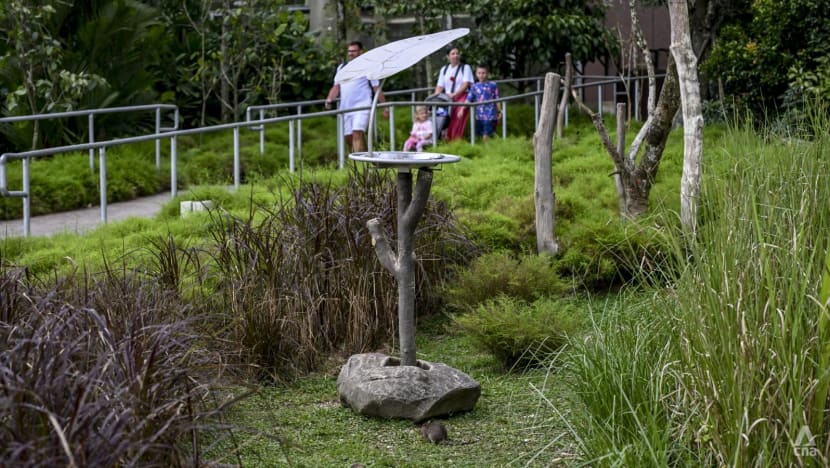 A rat seen below a feeding tray at Singapore's Bird Paradise on Feb 10, 2025. (Photo: CNA/Wallace Woon)
A rat seen below a feeding tray at Singapore's Bird Paradise on Feb 10, 2025. (Photo: CNA/Wallace Woon)
Though commonly seen in urban areas, the sewer rat also dwells in other land environments.
While pest controllers usually target rats with poison and traps, using conventional methods would prove tricky or challenging with other animals around, said Mr Chong.
"These control methods might cause some collateral damage, meaning that birds might be caught or they might eat the poison," he said.
Traps with small mouse holes can keep out other animals, while the traditional mouse cage may suffice as other animals that are trapped unintentionally may be released without further harm.
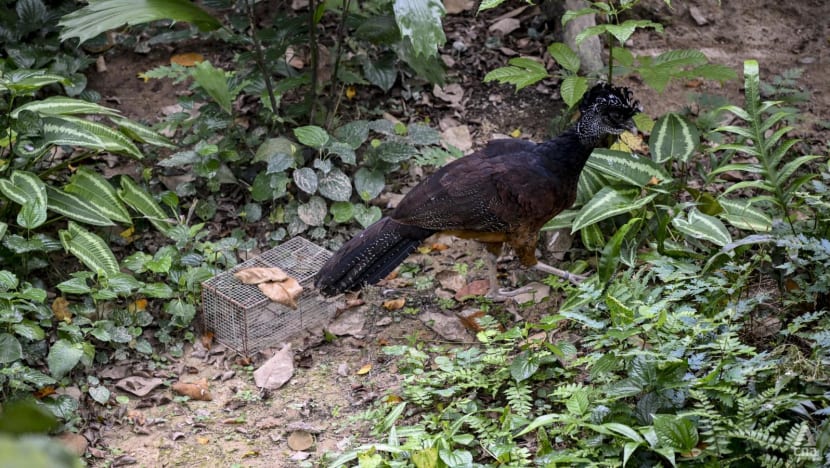 A great curassow walks past a rat trap at Singapore's Bird Paradise on Feb 10, 2025. (Photo: CNA/Wallace Woon)
A great curassow walks past a rat trap at Singapore's Bird Paradise on Feb 10, 2025. (Photo: CNA/Wallace Woon)
However cages that are not cleaned properly after trapping rats may deter other rats that detect the scent of previous ones, said Mr Chong.
Pest control operators may also choose to treat rat burrows to target rodents, he added.
Asked if the rats posed a problem given that they mostly lurked in areas off-limits to visitors, Mr Chong said the population should be curbed upon initial sightings.
"The presence of rats is never good as rodents are classified as a vector (meaning they are pests that spread disease to humans), so (it's) best to curb their population when you start to see them, instead of leaving it be until the population becomes very big; then it would take more time to control the issue," he said.
"A large rodent population might give rise to damaged equipment ... as rodents have a habit of chewing on stuff, so (they) might damage nettings, electrical cables," he said.
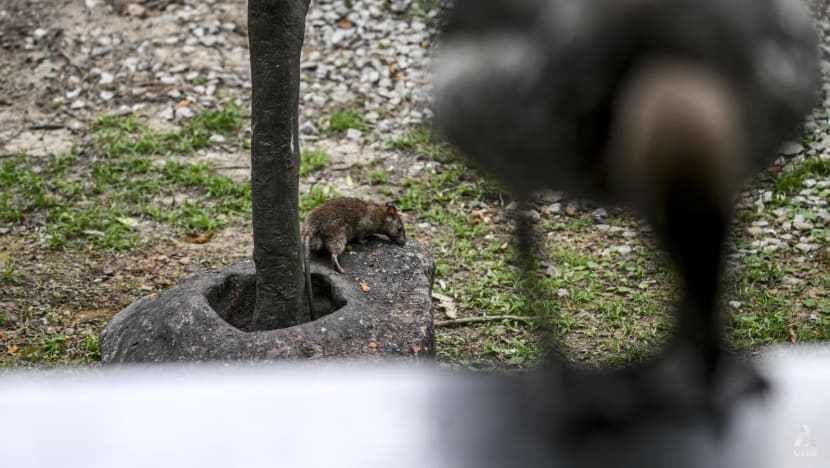 A rat crawls on a rock behind a bird at Singapore's Bird Paradise on Feb 10, 2025. (Photo: CNA/Wallace Woon)
A rat crawls on a rock behind a bird at Singapore's Bird Paradise on Feb 10, 2025. (Photo: CNA/Wallace Woon)
Asked if she was worried about the rat population, Ms Lian said she was thankful the pathways were mostly elevated from the ground where rats were sighted.
"But I would be worried if I started coming across them in areas like the toilet or food areas. Basically if it gets out of control and goes beyond the enclosures," she said.
Mr Huang said: "I was wearing sandals so I was hoping some rat wouldn't come to take a bite."
